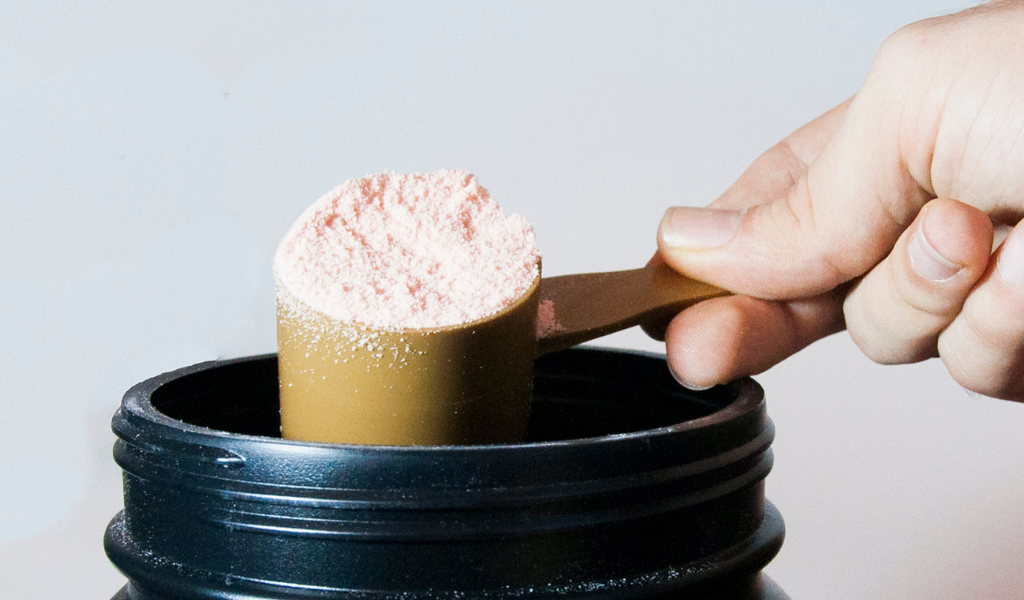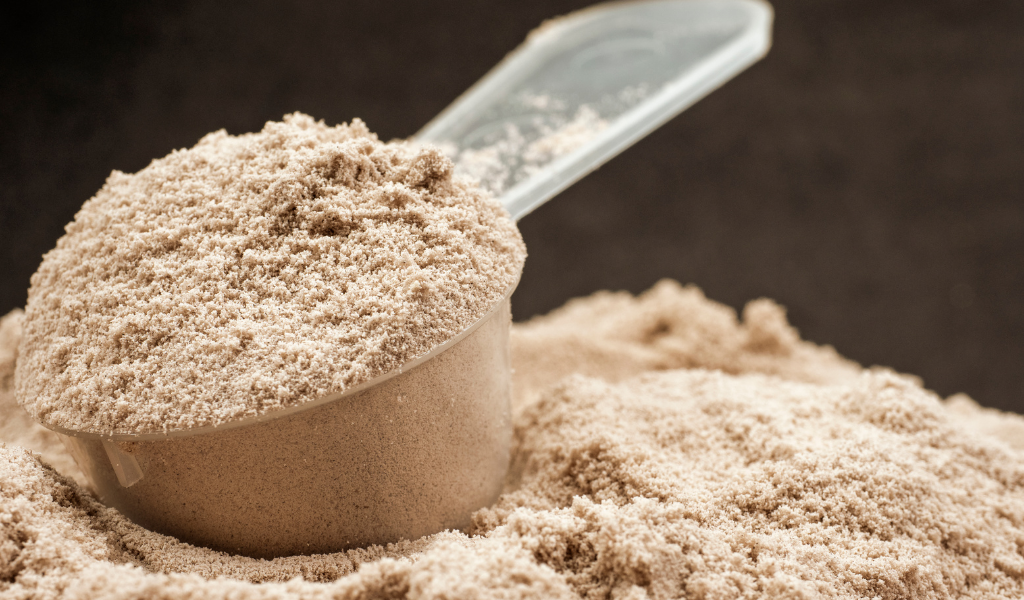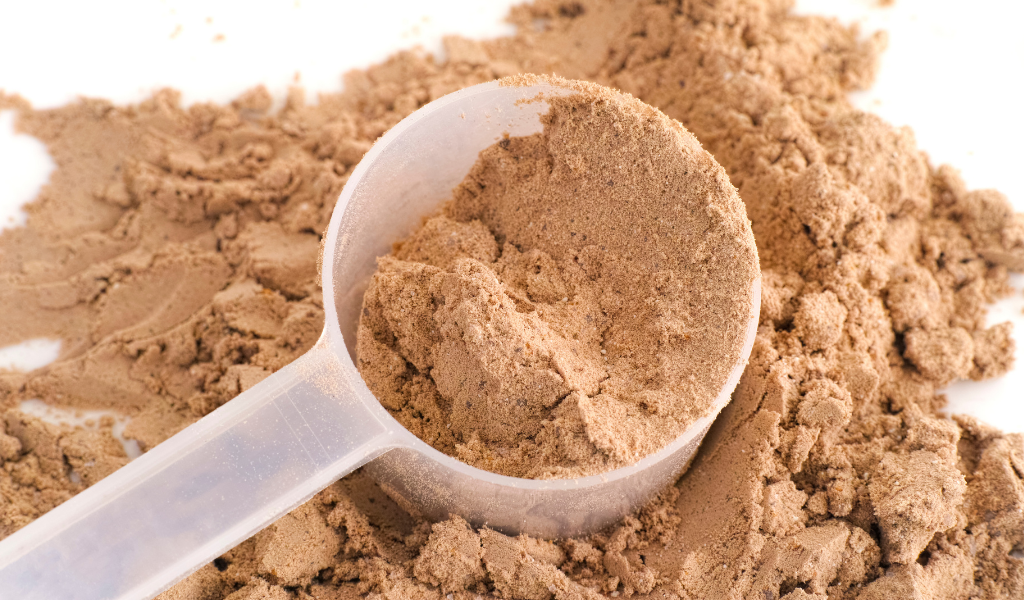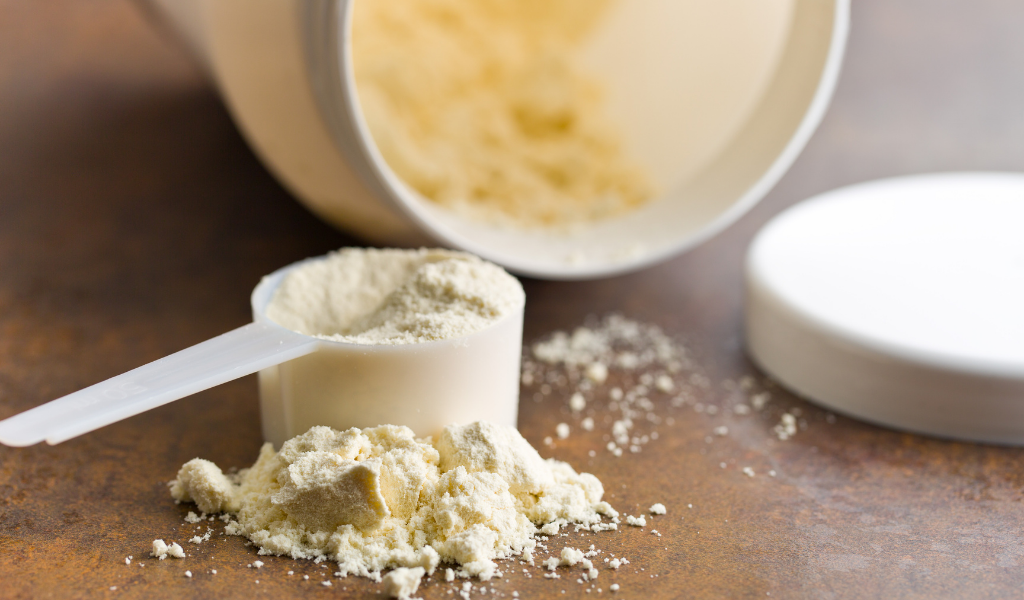No products in the cart.
What is Whey Protein made of and its 10 benefits

Are you wondering what whey protein is made of and its benefits? There are a lot of supplements that promote whey protein and in this article we will break it down for you along with other proteins. To start form the begining, protein is one of the three macronutrients, along with carbohydrates and fats, and is required to repair, sustain, and build the body’s structures, notably muscle mass. Once upon a time, only athletes and bodybuilders concentrated on their protein intake and looked for ways to supplement it. For anyone who watched the Academy Award-winning film “Rocky”, who could forget Sylvester Stallone cracking raw eggs into a glass and drinking them straight as part of his morning routine.
Protein has been mainstream for years. The food, fitness, and diet industries have made the general public aware that protein intake is important. Packaged foods everywhere advertise their protein content, and compete with one another over which product has more. Fast-casual restaurant menus have directions to “pick your protein” as the first step in your meal assembly process.
So we all know about protein. A lot goes into understanding protein. It gets pretty complicated and to select the right dietary protein or supplement, it’s important to have a grasp of the basics. So, let start there.
Protein is composed of sub-components called amino acids which are important to the function of the body: repair, maintenance of certain functions, and building…mostly notably muscle. There are 22 amino acids in all.
Nine of the 22 amino acids*—nearly half—are considered “essential” and must be consumed in the diet. In alphabetical order they are:
- Histidine
- Isoleucine
- Leucine
- Lysine
- Methionine
- Phenylalanine
- Threonine
- Tryptophan (the alleged culprit for sleepiness after eating turkey or drinking milk)
- Valine
*Not all forms of protein have all the amino acids. Some plants do not, although some plants do, such as quinoa.
No one questions the importance of protein as a nutrient, although there is debate over what makes the best dietary protein and how much protein a person should consume and whether it should come from plants or animals.
Protein sources: Animal versus plant

Protein can be obtained from either animal or plant sources, and are divided into “complete” or “incomplete”. A complete source contains all nine essential aminos (mentioned above), where the incomplete ones do not. A protein’s completeness is central to any discussion about protein supplementation.
Interest in plant-based food stuffs have surged along with environmental consciousness. Plant-based meat substitutes have gained popularity as consumers look for healthy and earth-friendly foods without sacrificing taste.
Plants as whole foods contain other beneficial nutrients that animal proteins do not that make them a wise dietary choice beyond their protein content. Plants provide fiber; animal protein doesn’t, so it’s wise to include plants (vegetables, legumes, fruits, nuts and seed) in your diet to get the known benefits, vitamins and minerals unavailable from animal products, and the digestive benefits of fiber.
There are several types of plant-based protein powders, including pea, rice, and soy. However, not all plant proteins contain all the amino acids and they also have less of an anabolic effect—exactly the property consumers seek from protein. Plant-based proteins can be fortified to compensate for those deficiencies.6 In general, when shopping for a protein supplement, it’s wise to consider one that offers all nine essential amino acids.
The US Recommended Daily Allowance (RDA) for protein is 0.8 grams of protein per kilogram of body weight. For active individuals, the amount is thought to be 1.2 grams per kilogram of body weight, and for hard-training athletes, even higher—up to 2 grams per kilo of body weight.1
To get an idea of a daily protein requirement, let’s consider a 181-lb. (80 kg) man who leads an active lifestyle and works out regularly with weights. At 80 kilograms, our man should be consuming between 1.2 and 2 grams of protein per kilo, which we’ll average to 1.6 grams per kilo. This means he should be taking in 128 grams of dietary protein daily.
Let’s take a look at the protein content of a few foods to give you an idea of what foods and portions are required to reach 128 grams.
Egg, large (1) 6 g protein
Chicken breast (4 oz.) 35 g protein
Tuna (5 oz.) 33 g protein
Milk, 1% (8 oz. glass) 8 g protein
Almonds (12, about a handful) 3 g protein
Hummus (1/2 cup) 6 g protein
Potato, baked (large) 4 g protein
Rice, cooked (1 cup) 3 g protein
Carrot, large (1) 1 g protein
So, if our example man eats four small chicken breasts, or a 1-1/4 lb. of tuna, he would have consumed his daily protein intake requirement. You can do the math to find out other ways to get the necessary protein.
However, if our sample man is training an athlete, the daily requirement goes up to 160 grams, which for a busy person, can become a challenge, so a supplement that’s convenient and delivers additional protein at a reasonable price makes sense.
One ounce of powdered whey protein contains 0.2 grams of protein. Most scoops provided along with a container of protein powder deliver about 20 grams of protein when filled.
Whey and Other Protein supplement types
Widely available protein supplements come from egg, dairy and plant sources. Whey and casein are the two dairy-based protein powders available. Soy is the most common plant-based supplement. Other plant-based proteins are pea, rice, hemp, and mixed plant.
Whey and Casein are constituents of cow’s milk. Casein makes up 80% and whey the other 20%. Both casein and whey contain all nine essential amino acids. Ingredients are added to milk during the cheese-making process, which cause casein to coagulate, leaving whey in a liquid state.
What is whey protien made of?
Whey protein is made of the liquid that’s left once milk is coagulated into curds during the cheese or yogurt-making process. Once the whey is separated, it’s filtered to remove the unwanted fat and water. It is then dried and made into powder and packaged.
Whey is available in several forms, with the difference being the processing method (See below for more on isolates, hydrosylates, and concentrates). Whey protein is more rapidly digested and is associated with greater feelings of fullness. This, along with its low fat and sugar content, can lead to reduced calorie intake – an added benefit for weight-conscious people.
What is Casein protein made of?
Casein—the other constituent protein in cheese-making—is slower to digest leaving the amino acids stay in your system longer than whey—up to five hours for casein as compared to 90 minutes for whey. Because casein is slow to digest, there’s thought that it may be appropriate as a snack before bedtime.
Soy protein

Soy protein is a heart-healthy alternative to the dairy-based powdered protein supplement. There is some concern among protein supplement consumers—bodybuilders and strength athletes in particular—that soy has the undesirable side effect of raising estrogen level. While there is some evidence suggesting less testosterone production for soy consumers than whey, there’s no support for elevated estrogen.4 In general, protein supplement consumers are looking for muscle gains which are clearly associated with testosterone, so the more favorable testosterone response from whey protein makes it a clear winner over soy.
Processing methods
When selecting a protein supplement, you’ll be greeted by three terms: concentrates, isolates and hydrosylates. Here’s a quick run-down, with the differences.
Concentrates. Whey concentrates are less-processed, tend to cost less, but have more carbs, fat, and lactose than isolates.
Isolates. Isolates are more highly processed, and have more grams of protein per unit than concentrates. Fat has been removed and almost all carbs. Both concentrates and isolates of whey and casein are both very low lactose, making them good choices for those with lactose intolerance.
Hydrosylates. Sometimes labeled “pre-digested”, protein hydrolysate powders have been processed using acid, heat, or enzymes to break down the whey. Due to the processing, hydrosylates are the fastest to metabolize, getting them into the bloodstream and available to the muscles sooner. Hydrosylates tend to be more expensive.
Benefits of whey protein supplements

Healthy. Unlike some sources of protein, in particular red animal meat, whey protein offers high quality protein with all the essential amino acids and without the saturated fats associated with animal proteins.
Easy to prepare. Protein powders are famous for their easy addition to shakes and smoothies, both of which can be made to include other healthy ingredients—such as fruits, vegetables, or milk—along with the protein powder. Both shakes and smoothies with added protein powder make for healthy snacks on the go, a more body-conscious alternative than pre-packaged or fast foods.
Convenient. Since consuming protein in powder form requires just mixing it with a liquid, or sprinkling it on another food, like oatmeal, protein powders fit well into the diets of people who are constantly on the go.
A protein drink can be made and consumed all inside five minutes. A protein shake makes a great nutritious snack while on-the-go. Using our example above, one protein shake adds 20 grams of protein to daily intake, nearly 20% of the average daily requirement.
Source of essential nutrition. Protein powders that contain all the nine essential amino acids referenced earlier, give you confidence that you’re “checking all the boxes” when it comes to getting a complete protein needed to repair, build, and sustain muscles, organs and other bodily structures.
Anabolic. The most common motivation for protein supplementation is growth of skeletal muscle. Whey protein’s anabolic effects are well-studied. Whey’s anabolic effects appeal to two groups: those who want to add muscle for athletic performance or cosmetic effect, and those—particularly the elderly—who want to slow age or disease-related muscle wasting.7
Testosterone-boosting. At least one study suggests that whey protein may boost testosterone, although the authors admit more research is needed. However, that study is not alone in hypothesizing whey protein’s positive effect on testosterone production.3
Fat loss. Loss of body fat directly as a result of protein supplementation and was observed in a randomized trial between a whey protein supplement and a control beverage. Interestingly, study subjects lost body fat while retaining lean muscle mass—precisely the effect most protein supplement consumers want.7
Satiety. Protein supplements have a satiating effect, and in the presence of other healthy lifestyle measures—such as vigorous exercise and sufficient sleep—protein can replace (a) less healthy food alternatives, and (b) keeps you feeling fuller longer, which can lead to consuming fewer calories overall.
Prevents wasting in the elderly. It’s known that as we age, the body loses a few percentage points annually of lean muscle mass, an estimated 3% annually after about age 30. This is exacerbated in older age as metabolisms slow and appetites decrease. A “fast” absorbing protein supplement like whey may slow muscle wasting in the elderly.5
Summary
Whey protein as a dietary supplement has been heavily studied and its benefits are well-documented in the scientific literature.8 Whey protein provides all the essential amino acids, and its benefits go well beyond its reputation as a muscle-building supplement for strength and physique athletes. And, due to its affordability, whey protein can be a part of any well-balanced healthy diet, particularly for active people seeking healthy alternatives to fast food.
